Advancement in the eye glasses manufacturing has made it possible to customize eye-wear to suit the specific needs of the wearer. From the frame to the lens and the kind of coating that can be applied to the lens, the user has options for all. The type of lens and the coatings you choose for your prescription eyeglasses can enhance the quality of the eyeglasses, their performance and also their appearance. If you are looking to buy a new pair of eyeglasses, here are your options.
Types of lenses
The most important part of your eyeglasses is the lens. You can chose from different types of lens today. Following are the options you have.
- Single vision lenses
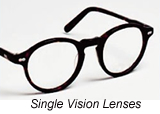 Single vision lenses are the most common type of lenses prescribed for correcting eyesight. The standard eyeglass prescription lenses, these lenses only have a single viewing area throughout the lens. They are often used as correction lenses for far or mid distance viewing and reading.
Single vision lenses are the most common type of lenses prescribed for correcting eyesight. The standard eyeglass prescription lenses, these lenses only have a single viewing area throughout the lens. They are often used as correction lenses for far or mid distance viewing and reading.
Far distance lenses are usually for viewing objects at a distance easily. You may not use these lens all day, but only for certain activities like driving or watching a movie. Mid distance single vision lenses are for viewing objects at a shorter distance more clearly. You could use these lenses while working on a computer or reading something that is just an arm's length away. - Bifocal lenses
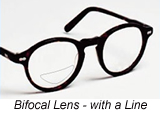 Bifocal are similar to progressive lenses in the sense that they have different viewing areas. The difference here is that bifocal lenses have a line that segregates the viewing area, while progressive lens do not have that demarcation. Bifocal lens has two points of focus, with the major portion of the lens being used for correcting short sight, and a small portion is for correcting near-vision issues. At OpticalNext, we have the finest quality bifocal lenses made of 1.50 plastic index. These lenses come with UV protection as well as anti-scratch features.
Bifocal are similar to progressive lenses in the sense that they have different viewing areas. The difference here is that bifocal lenses have a line that segregates the viewing area, while progressive lens do not have that demarcation. Bifocal lens has two points of focus, with the major portion of the lens being used for correcting short sight, and a small portion is for correcting near-vision issues. At OpticalNext, we have the finest quality bifocal lenses made of 1.50 plastic index. These lenses come with UV protection as well as anti-scratch features. - Progressive lenses
Progressive lenses have different viewing zones for conveniently reading something at near, far and intermediate distances. These lenses remove the need for you to carry your reading lenses wherever you go.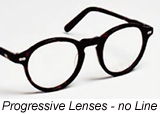 These lenses are the closest you can get for a natural vision, as they offer a smooth transition to let you see and read clearly at all distances. With this lens, you can comfortably see what is at a distance, at a short distance and right in front of you by changing the part of the lens you see through.
These lenses are the closest you can get for a natural vision, as they offer a smooth transition to let you see and read clearly at all distances. With this lens, you can comfortably see what is at a distance, at a short distance and right in front of you by changing the part of the lens you see through.
Lens index options at OpticalNext
The material that lenses are made of is referenced by the bending power, also known as refraction index or simply index. The index of the lenses contributes to creating the power of the lens and also the thickness, and the weight of the lens. At OpticalNext, we offer different lens index to meet the needs of our customers.
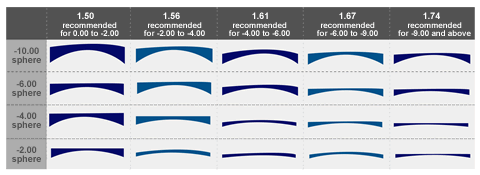
High-index lenses that are thinner and lighter are ideal if higher corrective power lenses are prescribed. Following are the lens index choices you will have at OpticalNext.
- Plastic Lenses (Standard Index of 1.50) are ideal for low prescriptions, of SPH (0 to +/-2.0) and CYL (0 to +/-1.5). For higher prescriptions, high-index lenses are recommended.
- For low-to-moderate prescriptions, thinner lenses with a mid-index of 1.57 are ideal. These lenses have an SPH of (+/-2.0 to +/-4.0) and CYL of (+/-1.5 to +/-2.0).
- Super thin lenses or lens with a high index of 1.61 are recommended for people who have moderate prescriptions of SPH (+/-4.0 to +/-6.0) and CYL (+/-2.25 to +/-3.0). If you are looking for light lens, these are ideal for you.
- Ultra thin lenses of high index 1.67 are ideal if you have a moderate-to-high prescription, of SPH (+/-6.0 to +/-9.0) and CYL (+/-3.25 to +/-4.0).
- Extremely thin lenses are lenses with a higher index of 1.74. These lenses are recommended if you have high prescriptions with SPH of more than +/-9.0 and CYL above +/-4.25.
- Polarized lenses have an index of 1.57 and are used in sunglasses. The lenses reduce the glare from reflective surfaces like water, glass, or a hood of the car that can impair your vision even for a moment. The lenses achieve this ability through the polarization process, which is similar to using blinds to control sunlight coming in through a window.
- Diamond Clear Polycarbonate lenses have a high index of 1.59. These lenses are stronger than other types of lenses. However, these lens cannot be tinted.
Photochromic lens
Photochromic lens have the ability to change the tint or color when exposed to sunlight, to reduce the glare and protect the eyes from UV rays. The amount of tint or darkening of lenses can go from light to dark depending on the exposure to the ultraviolet rays. These glasses are extremely convenient for people who want to use the same eyeglasses indoors and outdoors, when they travel in hot and sunny conditions. These lenses usually come with 100 percent UV protection and anti-scratch properties.
Colored or tinted lens
Unlike photochromic lens that change color or tint depending on exposure to the UV rays, color of tinted lenses is constant and does not change based on where they are used. At OpticalNext, we offer tint lens in the following colors: green, brown, grey, blue, pink, and purple.
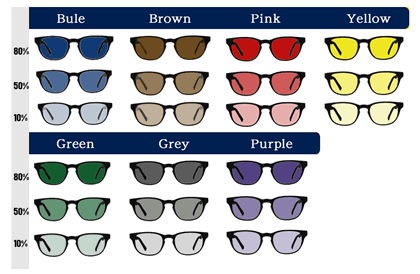
These lenses can be tinted 20 percent, 40 percent, 60 percent and 80 percent. Light tinted glasses are usually preferred for cosmetic reasons, while dark tinted glasses double up as shades.
Lens coatings
Almost all types of lenses can be coated with protective layers to prevent scratches and to protect you from UV rays and glare from sunlight, or devices with back-lights. OpticalNext offers the following lens coating options.
- Anti-scratch coating - This will prevent minor scratches that can appear on lens due to wear and tear. The coating is applied to the surface of the lens and makes the lens more durable and keeps your vision clear and accurate.
- UV coating - UV Coating is an effective coating that prevents the harmful ultraviolet rays of the sun from reaching your eyes. These lenses are similar to a UV sunscreen, and reduce the affect these rays can have on your eyes.
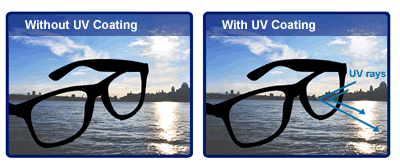
- Anti-glare or anti-reflective coating - Anti-glare lenses prevent light from passing through the lens as that can impair your vision. Glare is usually created when light bounces off the lens, rather than being absorbed by the lens or passing through it. Glare can be irritating and even prove to be dangerous when you are driving or performing any other activity. The anti-glare coating reduces the glare and makes it easier for the person to see even in bright light.
